#Muonio
Text
Finland, Lapland, Särkitunturi Muonio 🇫🇮
(c)
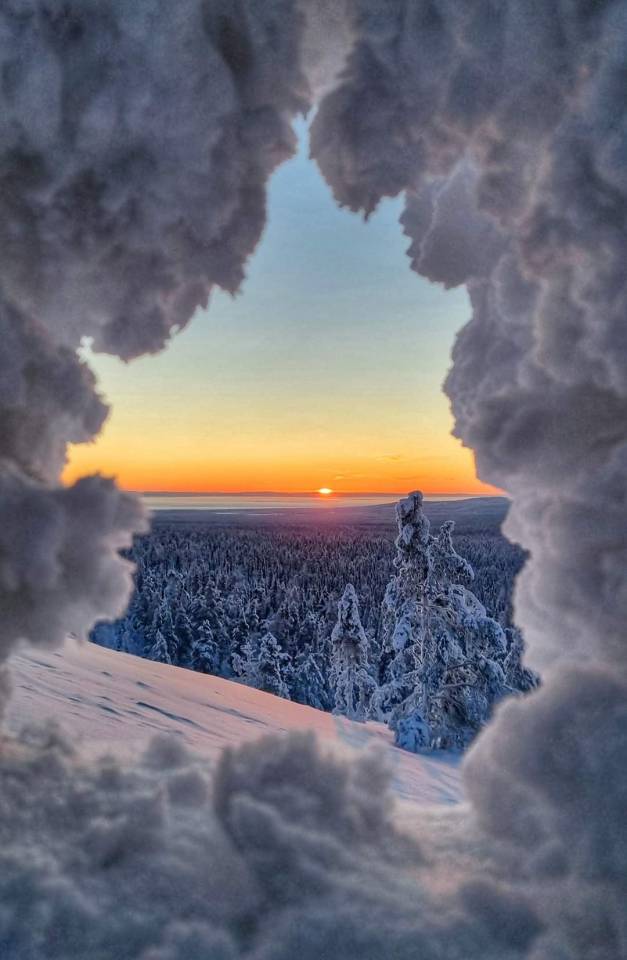
18 notes
·
View notes
Photo

ANTTI PIETIKÄINEN TAKES US TO THE MISTY FORESTS OF LAPLAND VIA DRONE
The Finnish Lapland takes pride in being a winter wonderland for travelers who dream of breath-taking landscapes, blanketed in snow. However, there’s more to see in Finland’s northernmost region, as Antti Pietikäinen shows us in his drone photos of summer in Lapland’s foggy wilderness. In his aptly named Misty Forests of Lapland set, Antti, who is based in the municipality of Muonio, takes us around the old fjells, lakes, swamps, and rivers that come to life during the summer in Lapland. During this time, the dark winter days give way to 24-hour sunlight: a stark contrast that is part of the allure of the region.
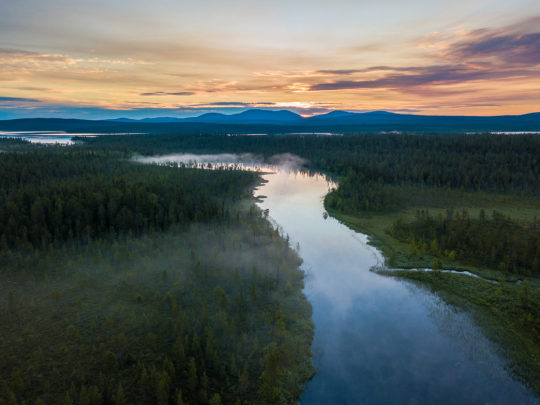


#antii pietikainen#photographer#drone photography#aerial photography#lapland#finland#landscape#summer#misty forests of lapland#nature
28 notes
·
View notes
Text
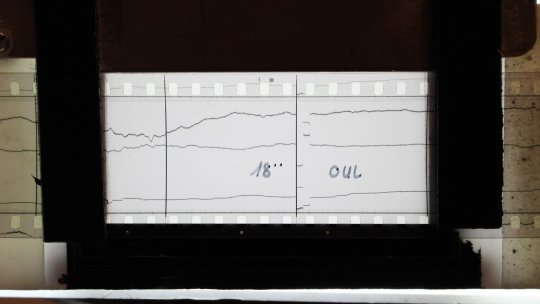
Solar storms hit more locally than expected: Current instrument network too sparse, says study
A new study shows that there is greater local variation in the impact of solar storms on Earth than previously estimated. Researchers show that the effects can vary widely even over distances as small as 100 kilometers. The findings are published in Scientific Reports.
Local changes in the magnetic environment have so far remained largely unexplored due to the sparse magnetometer array in the main observing area. Today, solar storms, or geomagnetic storms, are recorded on average by magnetometers spaced about 400 km apart.
Solar storm effects are caused by fast solar wind streams, which cause large electric currents to flow through the ionosphere of the Earth's auroral region, but the behavior of these currents during storms is still not fully understood. Solar storms also appear as auroras.
Researchers from the Sodankylä Geophysical Observatory (SGO) and the Ionospheric Physics Group at the University of Oulu, Finland studied the local magnetic field perturbations in the auroral region during space storms using historical data.
Large regional differences in the effects of solar storms
The new study looked at data from a strong solar storm in December 1977 from all 32 stations of the then Scandinavian Magnetometer Array (SMA) network in the Nordic countries, which is denser than the current network, and largely unexplored.
Studying the data was laborious, because in 1977, changes in the Earth's magnetic field were seen as fluctuations recorded by magnetometers on film strips. There were almost 40 kilometers of untouched, small film strips from nearly 50 years ago.
It was hand-photographed frame by frame over several dozen meters for the new study, and the images were digitized. Using the digitized values and modern magnetic data, clear regional differences in solar storm intensity were found.
"Usually today, we look at the whole of the Earth's auroral region as a single entity. However, we used more than 30 instruments to map the effects of a single solar storm from the Arctic Ocean to the Bothnian Sea," says Otto Kärhä, a doctoral researcher at the University of Oulu who also photographed much of the old films. He will present the new findings at the American Geophysical Union (AGU) San Fransisco Fall Meeting 2023 in December.
The rarity of large geomagnetic storms limits their study, and local effects have historically left largely unstudied. The largest solar storm in recorded history was Carrington in 1859. Descriptions at the time showed the sun brightening and being dazzling even to closed eyes. The Carrington solar storm caused sparks on telegraph lines and fires. Today, the consequences of a magnetic storm of this magnitude would be devastating for power grids and telecommunications links, including satellites.
In light of new research, local variations in a Carrington-class solar storm could be as high as 150 nT (nanotesla)/10 km. The difference is comparable to a small breeze in Muonio and a magnetic whirlwind 140 km away in Sodankylä.
"When such a solar storm hits, too sparse magnetometer network could lead to underestimation of local magnetic disturbances and underestimation of the preparedness for them," says Professor Eija Tanskanen, Director of SGO.
Large solar storm possible in the near future: Denser network to warn of local effects
Scientists around the world are fairly unanimous that in the near future, a historically large solar storm may hit the Earth.
"The variability in experts' estimates of its impact stems from the fact that the Earth's geomagnetic environment is still poorly understood, and solar storms cause very variable effects to the auroral currents. The current Intermagnet network has too few magnetometers in the polar region, most commonly at intervals of about 200–400 km, when it would be better to have them at 100 km intervals," says Tanskanen. The magnetometers are hosted by various research institutes and observatories.
Historical data from the new study revealed magnetic field structures in the auroral belt that cannot be observed with the current network of instruments.
"A denser magnetometer network would help to understand the complex structure of the magnetic field during solar storms. We could provide local warning of solar storm movements, and better safeguard infrastructure vulnerable to magnetic disturbances. Air traffic, for example, could also be warned more regionally about strong magnetic clouds and storms," Tanskanen suggests.
3 notes
·
View notes
Text
Government spending cuts have been criticised for targeting the same people in multiple different ways, with single parents, students and single people particularly hard-hit — but pensioners mostly protected.
On Thursday Helsingin Sanomat features a crowdsourced article on one family forced to move to a smaller flat thanks to a 200 euro cut in their housing benefit.
Natalia Kibroeva works full-time but still needs to move to make the budget manageable and avoid cutting back on hobbies or recreation for her son.
"It's shameful for the government that a person working full-time can't make ends meet, even though politicians say that a wage-earner should be able to get by in Finland," said Kibroeva, who adds that she grew up in poverty and wants to break that cycle for her own offspring's sake.
The family is moving from a two-bedroom apartment to a one-bedroom apartment, which means the mother will no longer have her own bedroom but rather sleep in the living room.
That's a suboptimal solution, but she says she feels lucky because they have managed to stay in the same area, the eastern Helsinki neighbourhood of Laajasalo.
With a 14-year-old son, moving to a new location at this stage would have been disruptive, but there are likely to be families in that situation.
Those with many children and those unable to find a cheaper apartment will be forced into difficult decisions, according to Kibroeva.
Healthcare cuts too quick?
Iltalehti reports on concerns within the ministry for Social Affairs and Health about the rapid pace of cuts in healthcare spending.
The government is aiming to save money in the sector, but ministry official Kari Hakala tells IL that the service changes might be happening too quickly.
The new wellbeing services counties are reducing the number of health centres before there has been proper research on the efficacy of digital services that are intended to replace them, according to Hakari.
He says that the regions are currently looking to implement cuts in the next 1-2 years, but a more sensible time horizon would be 3-5 years.
Cuts to NGO funding could also be damaging, as many of them undertake preventative work that helps lighten the load for healthcare providers.
Lapland recruitment
Finland's rural areas are emptying out, with many young people moving to the cities in pursuit of education and professional opportunities.
That leaves many towns unable to find the workers for basic functions like nursing, maintenance and even supermarkets.
Ilta-Sanomat reports on one solution for the S Group-affiliated Arina co-op in northern Finland — importing supermarket workers from Thailand and the Philippines.
The grocery chain's head of personnel Minna Salonen said that locals in some Lapland towns just don't fancy the shift work involved in the grocery trade.
The newcomers don't mind, and especially those from the Philippines speak good English, so she's hoping this will be a good solution.
The initial cohort of 14 workers will, however, undertake Finnish lessons before they arrive in Finland.
The travel and restaurant trades in the region are already familiar with recruitment in South East Asia, so Salonen has some confidence this could work for her shops.
In the case of Muonio, a town on the Tornio river in western Lapland, the new arrivals are helping ensure a new S-Market can open on time this summer.
0 notes
Text
This winter's lowest temperature, -20 degrees, was measured in Muonio municipality on Tuesday morning.
0 notes
Text
この冬の国内最低気温がMuonioで記録されたそう。-34.8℃というのがその気温。
うちの界隈では、この週末はマイナス20度前後まで下がると言う予報だった。でも結局、マイナス10度前後にとどまった。雲がかかってくれたからか?
2023年1月7日(土)
0 notes
Video
November rainbow in Lapland by Jon Jikkas
Via Flickr:
two photo panorama
#Lapland#Finland#November#outdoors#Winter#Nature#Ice#Pallas-Yllästunturi National Park#Pallas#Jerisjärvi#Muonio#rainbow
18 notes
·
View notes
Photo

Taken from the bridge over Muonionjoki in January 2020, Finland on the left, Sweden on the right.
3 notes
·
View notes
Photo


siberian jay does it better?
by Jari Romppainen
8 notes
·
View notes
Photo

ANTTI PIETIKÄINEN TAKES US TO THE MISTY FORESTS OF LAPLAND VIA DRONE
The Finnish Lapland takes pride in being a winter wonderland for travelers who dream of breath-taking landscapes, blanketed in snow. However, there’s more to see in Finland’s northernmost region, as Antti Pietikäinen shows us in his drone photos of summer in Lapland’s foggy wilderness. In his aptly named Misty Forests of Lapland set, Antti, who is based in the municipality of Muonio, takes us around the old fjells, lakes, swamps, and rivers that come to life during the summer in Lapland. During this time, the dark winter days give way to 24-hour sunlight: a stark contrast that is part of the allure of the region.
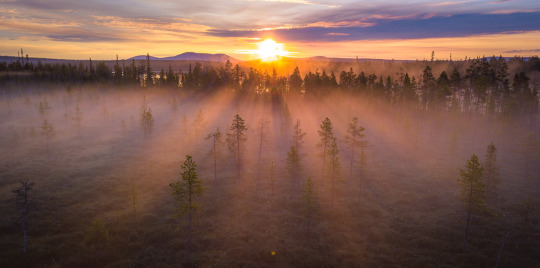

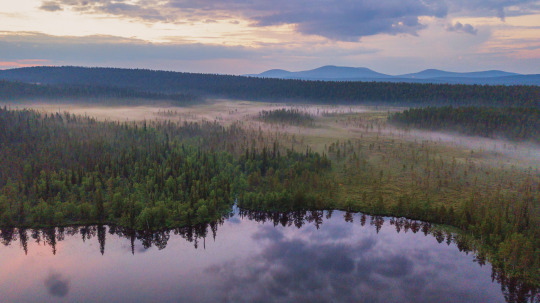
#antti pietikainen#photographer#lapland#finland#drone photograpy#aerial photography#summer#landscapes#misty forests of lapland#nature
17 notes
·
View notes
Text

Muonio, Finland - by Timo Öhman
284 notes
·
View notes
Text
Finland's ageing population will be putting increasing pressure on its health care system, yet successive governments have demanded a curb on spending. So how are Finland's social and health care services going with their cost-cutting, asks Helsingin Sanomat. Not very well, according to chosen expert, Mika Kortelainen, Turku University's professor of health economics.
The desired cost-cutting won't be achieved if the regions continue operating under the current model, says Kortelainen. If the system is to be made truly cost-effective, the wellbeing services counties must be given the right to impose taxes, he says.
Wellbeing services counties receive all their income directly from the state according to a financing model. That model includes incentives for the counties to save money, but according to Kortelainen, it doesn't provide enough incentive to invest in preventive medicine, for example. He thinks the counties should have the right to impose taxes if they are to make a dent in this year's combined deficit of more than one billion euros.
According to the law, wellbeing services counties must cover this year's deficits by the end of 2026, a requirement that has already led to services being closed. The current government has said that the counties should independently find ways to curb costs by around 900 million euros by 2027. However, the government has not announced clear plans on how the counties would go about achieving these savings, according to the professor, who noted that the previous government also failed to offer suggestions on such savings measures.
The paper also interviewed Jani Pitkäniemi, head of the Ministry of Finance's municipal and regional unit. According to him, cumulative savings of around 300 million euros should be achieved by 2029. He says it will take time before the savings begin to materialise and that the problems of social security costs would not be automatically solved by giving counties taxation rights.
The most important thing now, according to Pitkäniemi, is to monitor how existing cost control mechanisms work before decisions can be made about whether other incentives are needed.
Robot cars in Tampere
On a very different matter, Finland's dark, rain, snow and fog make it a useful testing ground for robot vehicles, writes Aamulehti.
The Research Institute of Finland, VTT, has been researching and developing vehicle automation and autonomous driving systems for 20 years in Tampere. Now it's taking two robot cars (named Martti and Heluna) out for a wintery test drive.
Over a two-and-a-half-month period, the cars will participate in three European automotive industry research projects evaluating how autonomous vehicles cope with Arctic conditions.
A bit of ice, snow and fog are useful when it comes to putting the robots to the test, but freezing weather is not all Lapland has to offer in terms of automated driving challenges.
"In Muonio, we once drove into such a torrent of mosquitoes that all Martti's automation stopped working for a distance of 50 kilometres," says team leader Matti Kutila.
Not-so-pressing presidential Q&A
Meanwhile, back in the capital, Ilta-Sanomat put Finland's 2024 presidential candidates to the test with some unusual questions. The paper grilled each candidate on the hot issues, which ranged from "does pineapple belong on pizza?" to "dog or cat?".
Highlights include Sari Essayah (CD) saying she reckons you can pick up a litre of milk on sale for 29 cents and Jutta Urpilainen's (SDP) candid admission that a dear friend's passing had allowed a momentary fear of death to creep in, even amid the election rush.
In other news, Harry 'Hjallis' Harkimo (MN) lives off about 500 euros a week, Li Andersson (Left) swears, but not in public, and Pekka Haavisto (Green) says he has never tried cannabis – even in the wild 70s.
And in case you're wondering, Mika Aaltola is okay with pineapple on pizza and Jussi Halla-aho (Finns) is a cat person.
1 note
·
View note
Photo

fullmoon in fell
#lapland#fullmoon#winter#original photographers#photographers on tumblr#muonio#sammaltunturi#nature#snow#january
126 notes
·
View notes
Photo
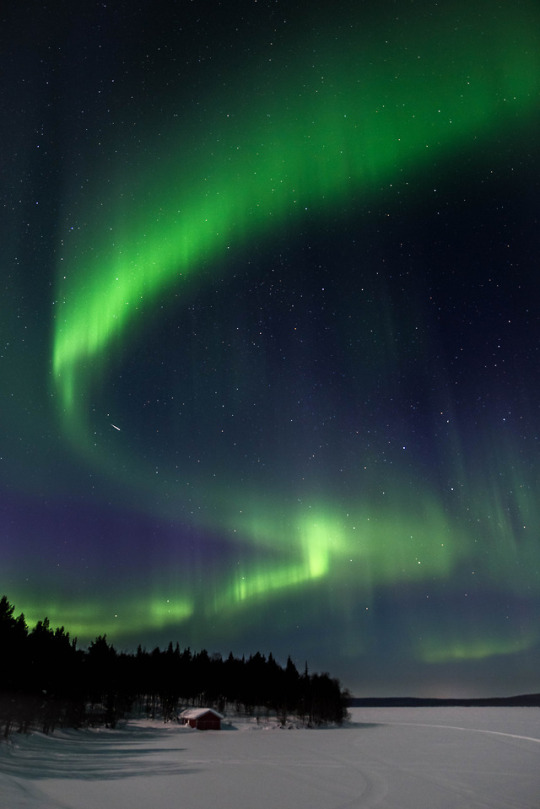
© | French_landscape_hunter
(Do not remove credits)
#muonio#finland#winter#snow#mountains#aurora#night#star#nature#landscape#vertical#photography#uploads#flickr#srr#French_landscape_hunter
188 notes
·
View notes